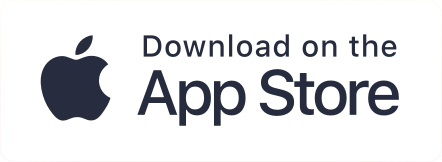Introduction
Blockchain technology — known primarily in the context of Bitcoin — has applications that include cryptocurrency transactions, streamline how we send money to loved ones in other countries, and deliver contracts and documents. What is the Blockchain, and what other applications are we going to see?
Understanding Blockchain Via Its Predecessors
The easiest way to understand new technologies is to examine its roots. Our cultural need to keep track of what’s going on in the world around us has directly evolved into today’s blockchain.
Bone Tallies and Sumerian Cuneiform Ledgers
The Ishango Bone — found near one of the sources of the Nile in the Democratic Republic of Congo — is a 20,000-year-old tally of objects.
Sumerian Cuneiform ledgers — found from Mesopotamia to Pakistan — are 9,000-year-old examples of single-entry accounting ledgers documenting the movement of goods (and perhaps the earliest forms of IOUs).
The Victorian Ledger
In Charles Dickens’ A Christmas Carol we encountered Victorian clerk Bob Cratchit, sitting attentively over a ledger, spending his days keeping track of the flow of money for Ebenezer Scrooge. He was tending to — in modern parlance — a centralized double-entry (one with checks-and-balance safeguards) accounting ledger. Centralized meaning the data was stored in only one location; a fragile arrangement that made the ledgers almost as valuable as the monies tracked.
The 20th Century Distributed Database
With the emergence of digital technologies, transactions became recorded in relational databases, available to all sorts of applications at computer speeds. Accounting (bank statements), analysis (stock trends), and actuarial (insurance) benefits leaped from the individual hand-written ledgers to centralized and (later) distributed database systems. Easy back-up of these databases removed the fragility of a single ledger.
Features of the Blockchain
One feature common to analog ledgers inked with quill pens and computerized databases is their opacity — getting visibility into their contents was deliberately made difficult for reasons of security and commercial advantage (knowledge is power).
From Opacity to Transparency
The Blockchain is a distributed digital technology that offers both transparency and accountability; transactions are available for inspection by all (via its public viewing permissions) while remaining resistant to tampering (via the cryptographically secure mathematics which safeguards its contents).
No Trusted Third Party Needed
Prior accounting techniques — from the ancients through the Victorian era to today — required a trusted third party to validate the books, leading to the current “big 5” accounting firms. The tallying of monies and the unfettered access to the banking accounts necessitated trusting someone to act in your best interest.
The blockchain technology guarantees the fidelity and security of the data — generating trust — without the need for a trusted third party. The same cryptographic algorithms which prevent digital currency from being copied and spent multiple times are those which establish an unassailable user identity for the blockchain ledger.
From Tables to Chained Data
Relational databases store data in tables, with the timestamp of a transaction existing side-by-side with the details. Vulnerabilities in data integrity and security provided some room for improvement.
Blockchains collect transactions together in groups, or blocks. When filled, the block is closed and cryptographically linked to the previous block; these linked blocks forms a chain — the blockchain. This type of data structure is far less vulnerable to attack.
The transparent and distributed nature of the data makes verifying and validating the contents trivially easy — there are even free, online “block viewers” which allow examination of the blockchain data available to anyone with even a casual interest.
From Fragility to Immutability
Decentralized blockchains are immutable, which means that the data entered is irreversible. For Bitcoin, this means that transactions are permanently recorded and viewable to anyone.
What’s Next for the Blockchain?
Anything that’s deemed valuable enough to record will eventually wind up being moved to blockchain technology. The ability to have actions triggered by blockchain content heralds a world where “smart contracts” overtake reams of paper forms. From rental agreements, mortgage refinances, to warranty registrations will take advantage of the immutable recording in the blockchain.
Conclusion
This blog post covered the recent creation of blockchain technology, the underpinning of Bitcoin. The blockchain’s capabilities by highlighting several evolutionary points from antiquity to the present day — counting via bone tallies and Sumerian cuneiform, the Victorian-era clerk-driven bookkeeping ledgers, and the 20th century distributed relational database. The most useful aspects and features of the blockchain were highlighted and future directions were covered, including “smart contracts” for rental agreements, mortgage refinances, to warranty registrations, and the like.
We offer resources such as videos and crypto investing guides to help you conquer crypto. Join our community and find more people achieving their financial goals through crypto. Download the Abra app and start trading today!
Download AppAbout Abra
Established in 2014, Abra is on a mission to create a simple and honest platform that enables millions of cryptocurrency holders to maximize the potential of their assets. Abra enables both individuals and businesses to safely and securely buy, trade, and borrow against cryptocurrencies – all in one place. Abra’s vision is an open, global financial system that is easily accessible to everyone.
Why Abra
Based in the United States, Abra is available in over 150 countries and makes it easy to convert between crypto and a wide variety of local fiat currencies. With over 2MM customers, $7B in transactions processed, and $1.5B in assets under management, Abra continues to grow rapidly. Abra is widely loved and trusted – in April 2022, pymnts.com reviewed and rated Abra amongst the top 5 most popular crypto wallets in the market. Abra is backed by top-tier investors such as American Express Ventures and First Round Capital.
How Abra Protects Your Funds
Abra places clients’ financial objectives and security first. Abra practices a culture of risk management across all levels and functions within the organization.
Abra employs a state-of-the-art enterprise risk management framework that comprises a comprehensive set of policies, procedures, and practices detailing all applicable risk-related objectives and constraints for the entirety of the business. Abra has instituted a complete set of requisite systems and controls that continuously enforce these policies, procedures, and practices to manage all operations, including credit and lending. Abra’s independent Risk Committee comprises experienced compliance, risk, securities, and fraud operations professionals with backgrounds in industries ranging from traditional and digital assets banking, payments, remittance, to fintech.
Please visit our FAQ to learn more.


